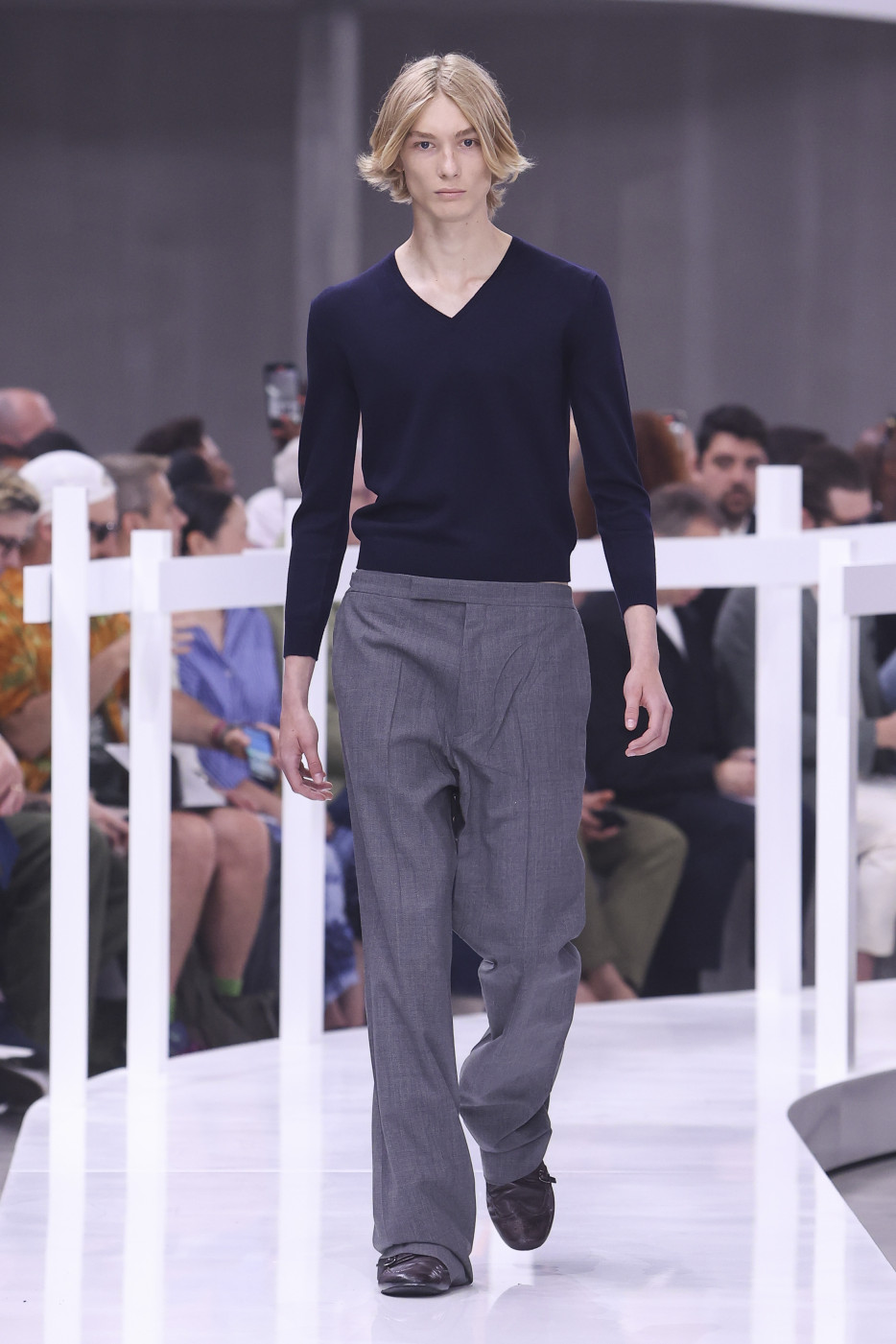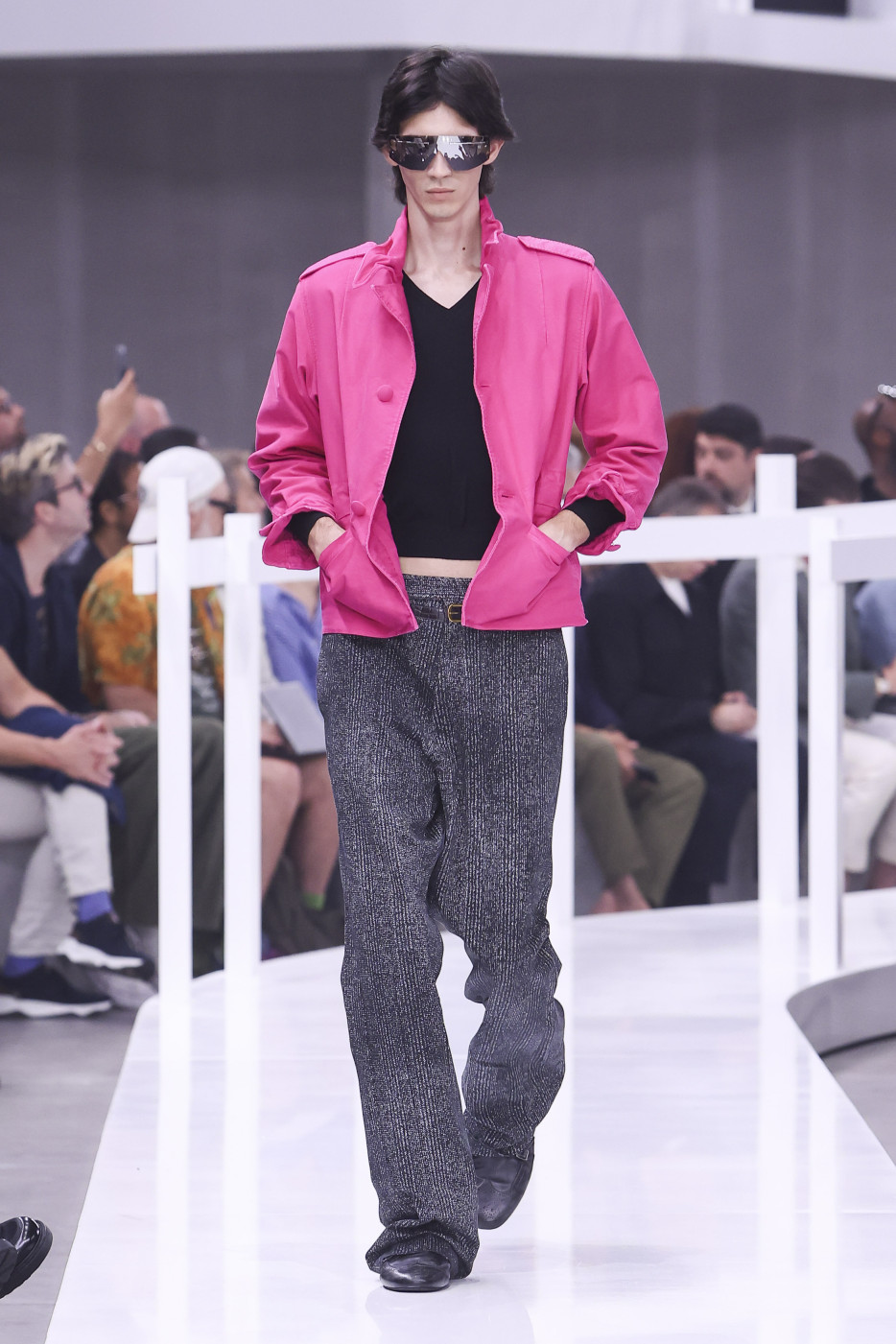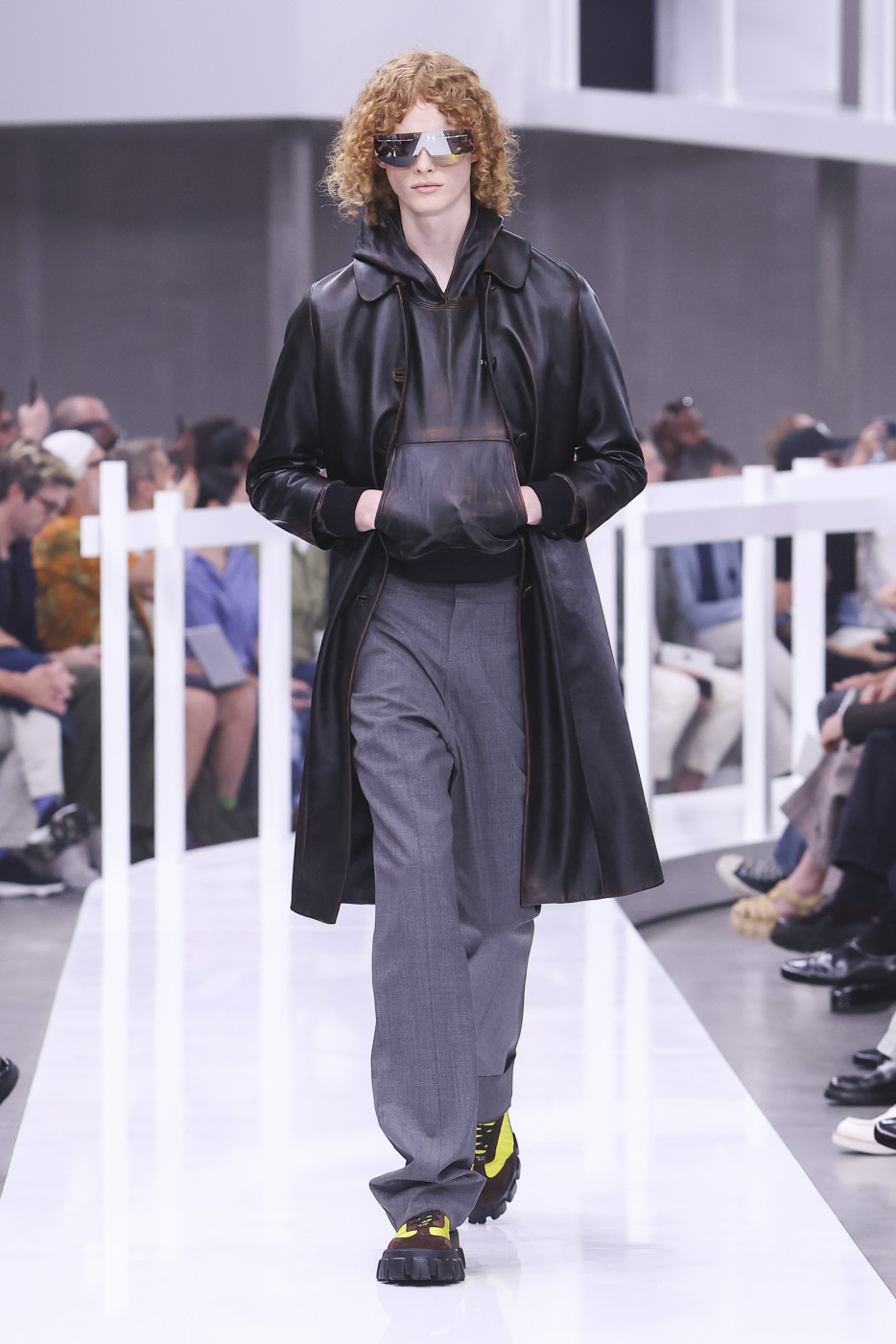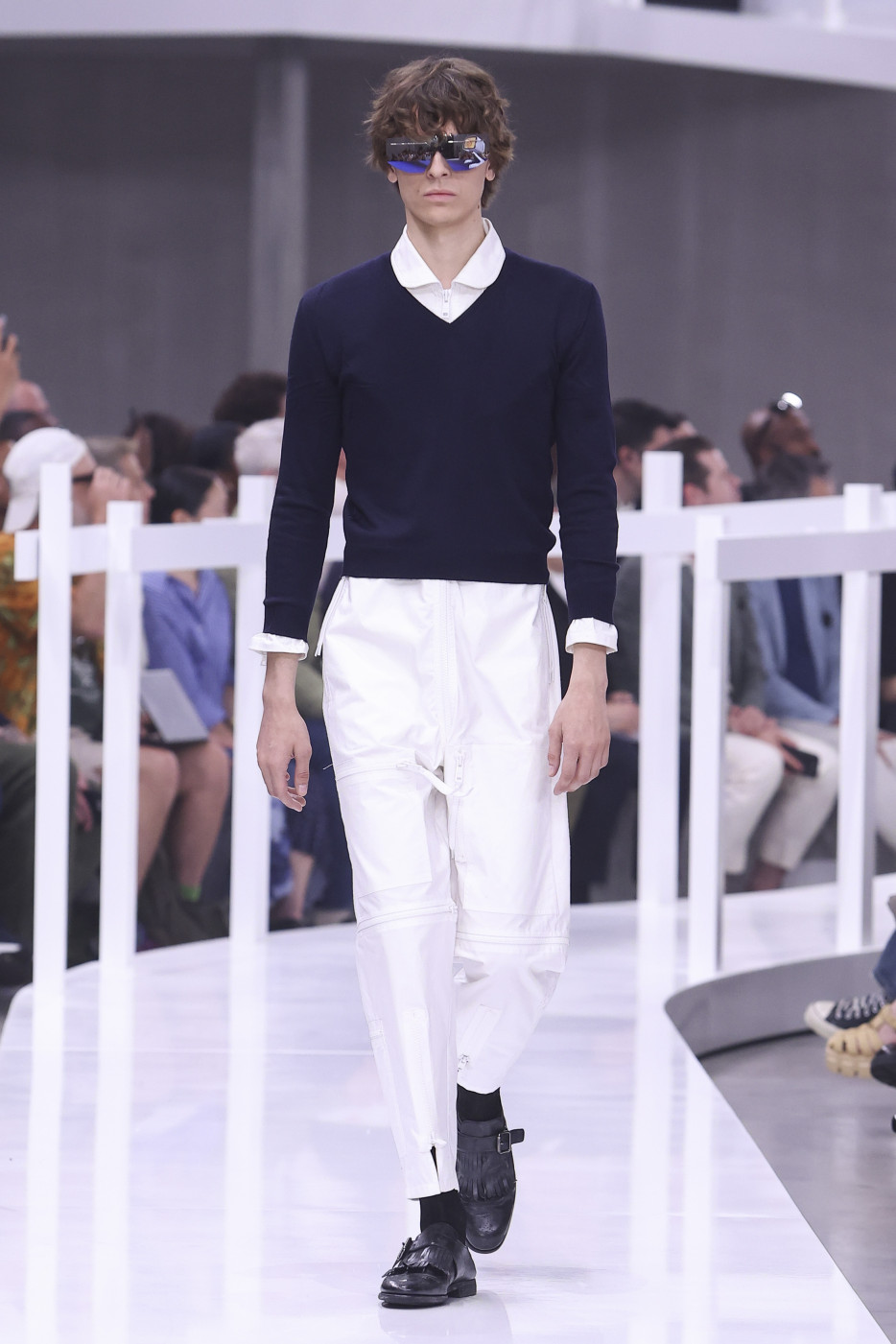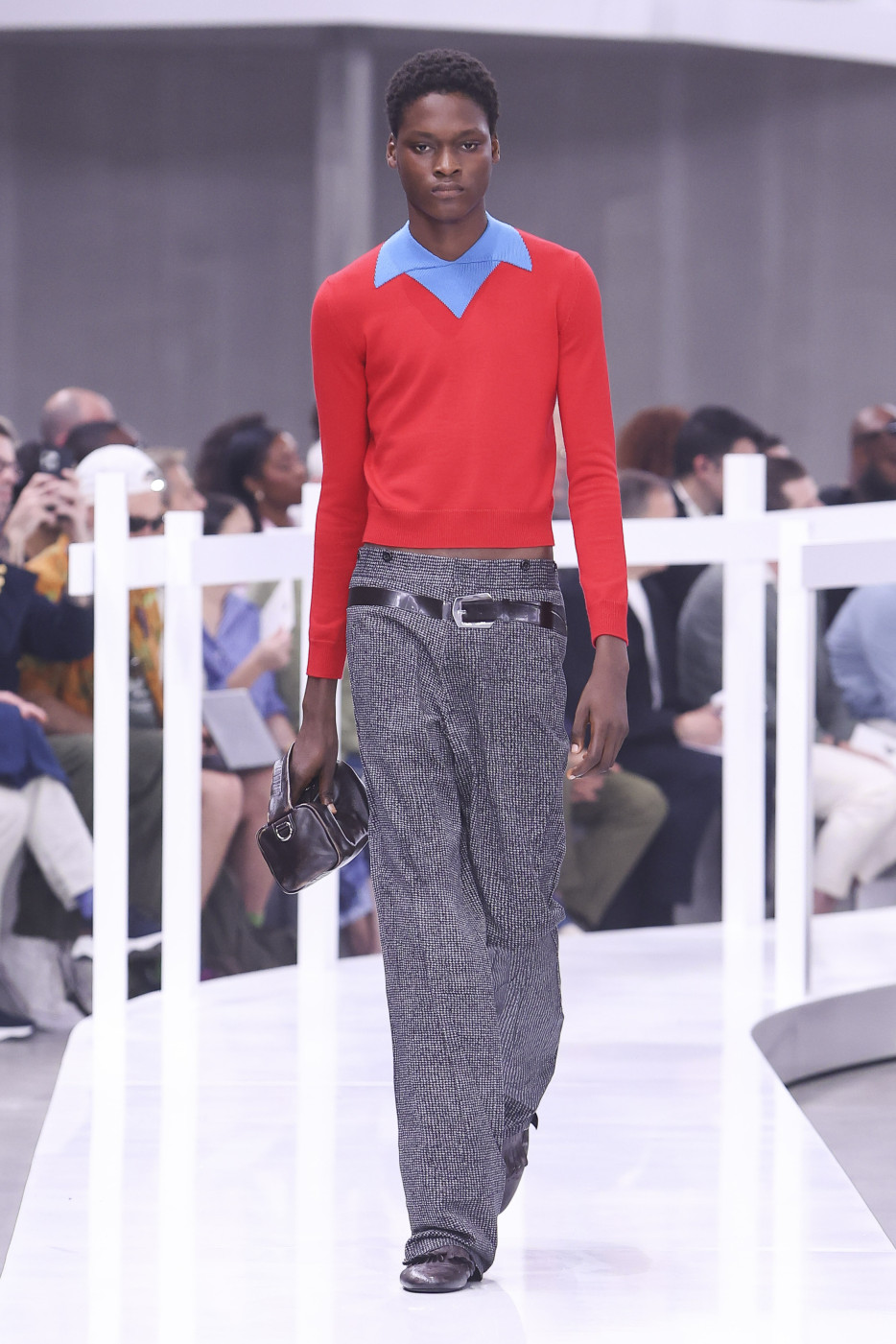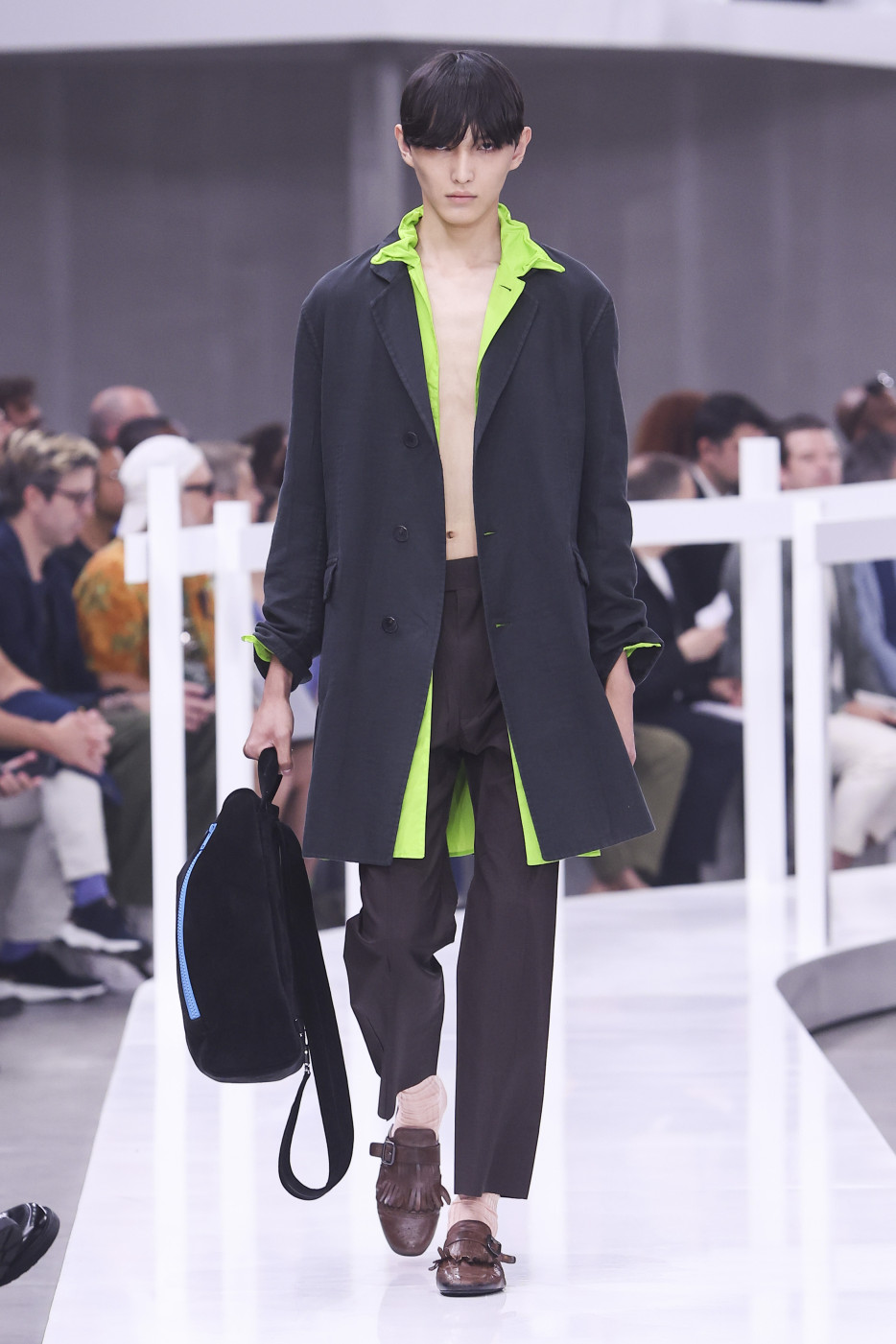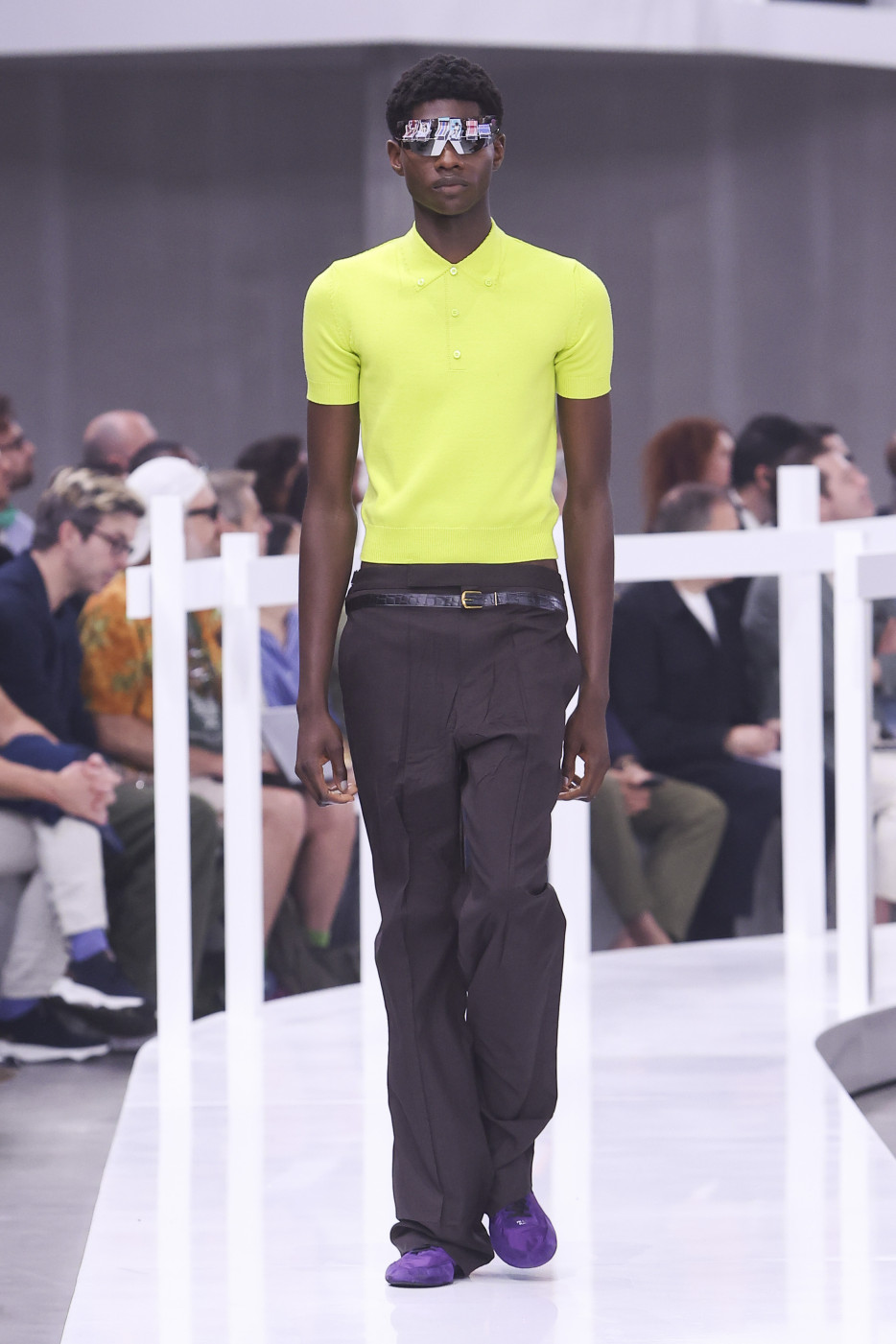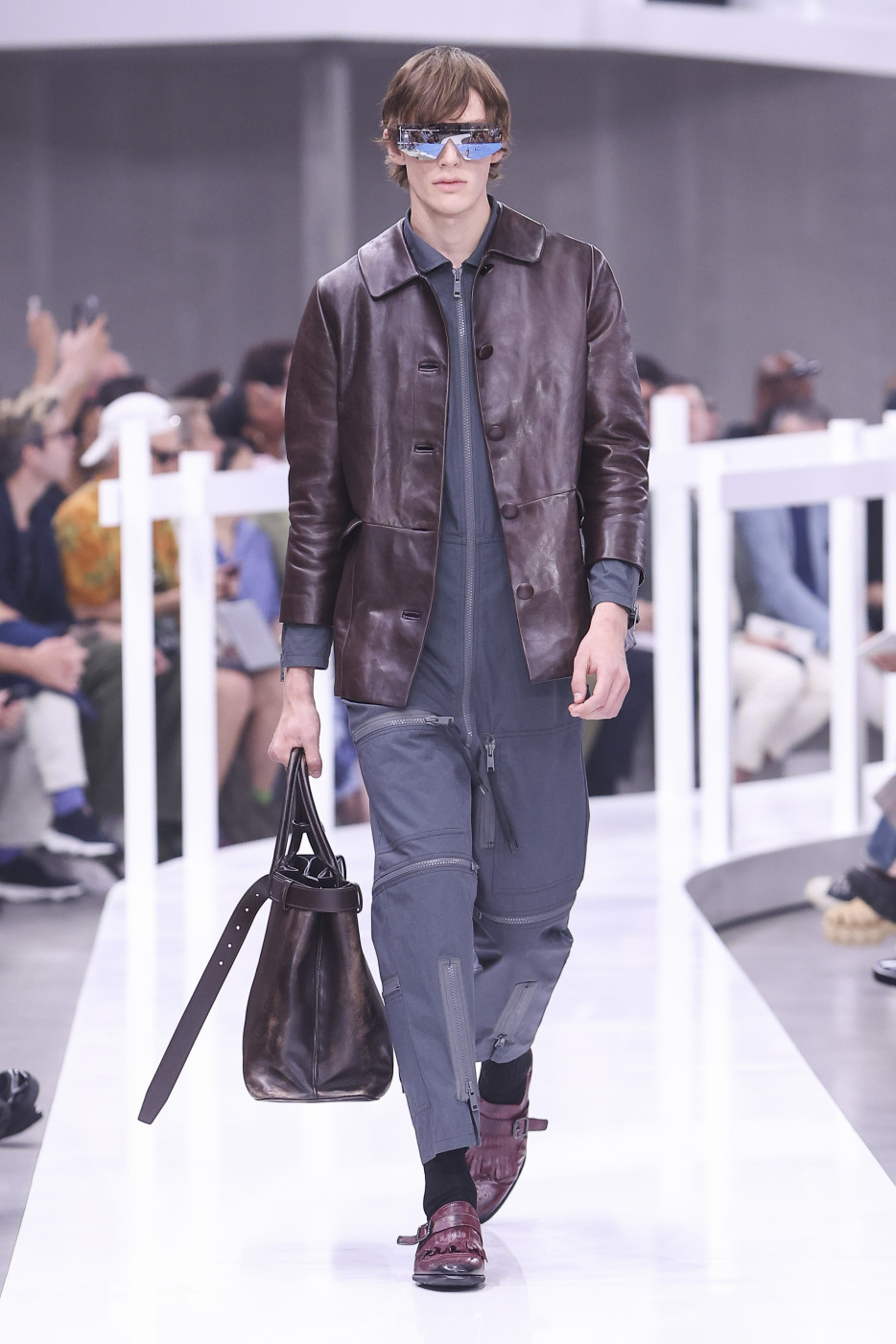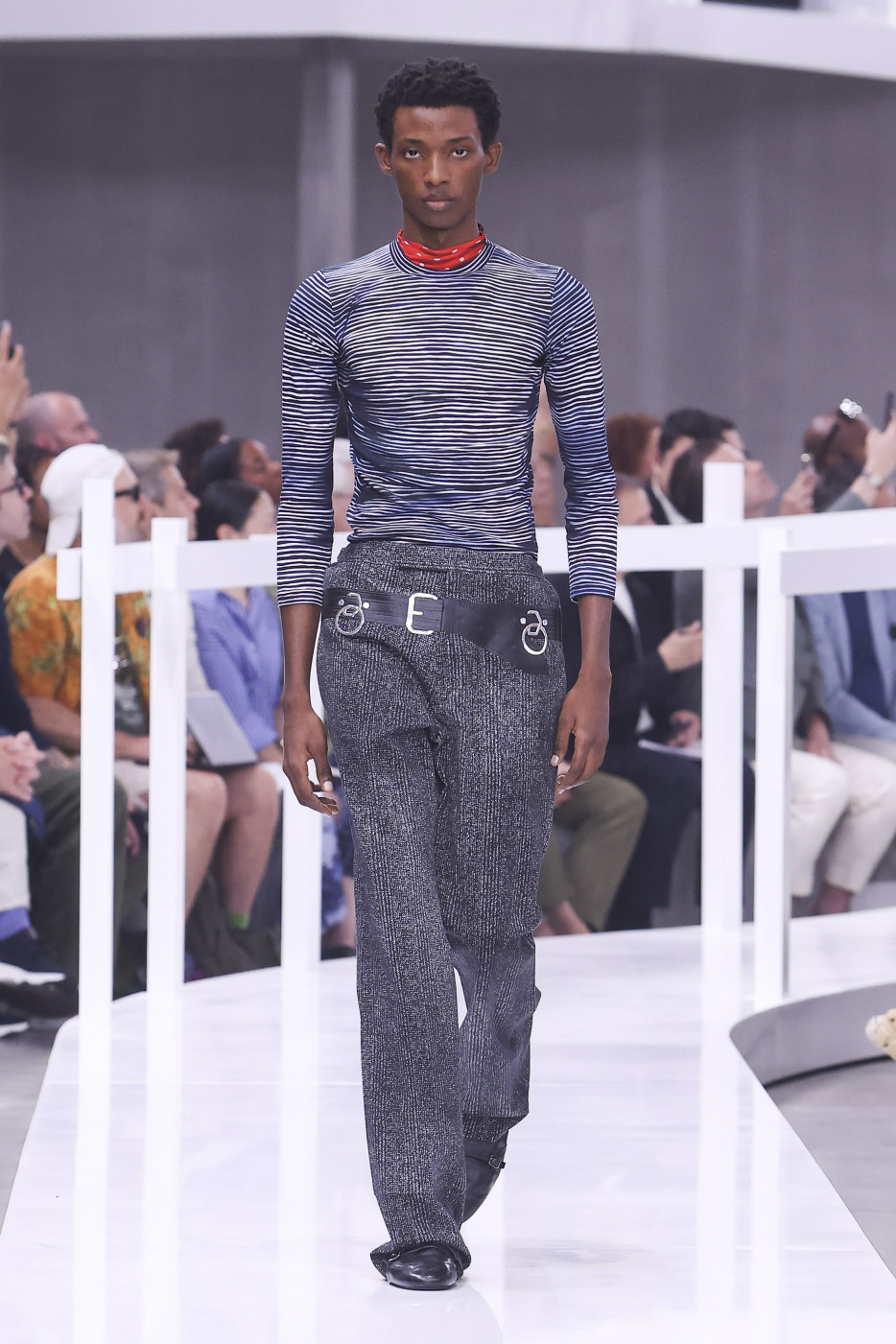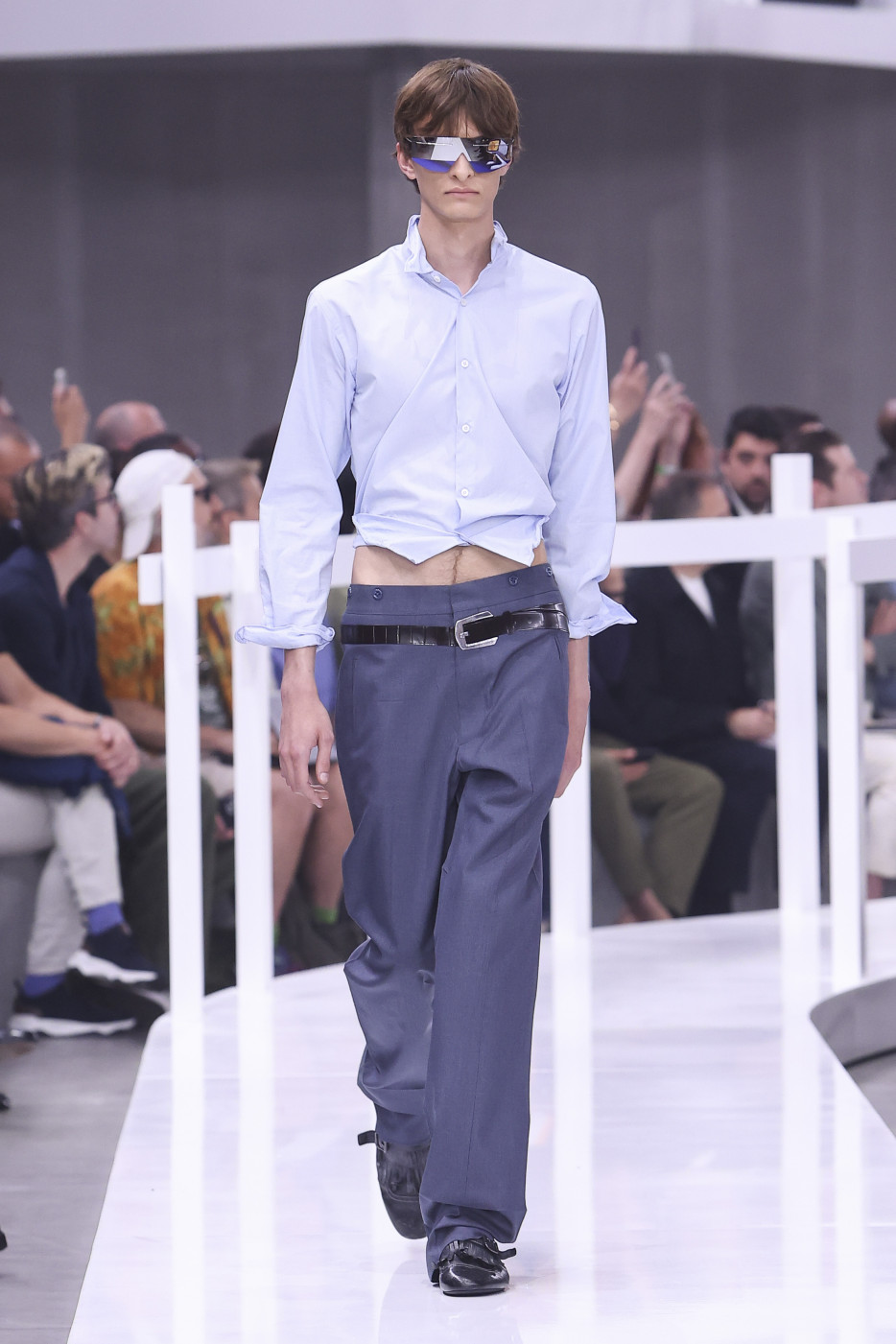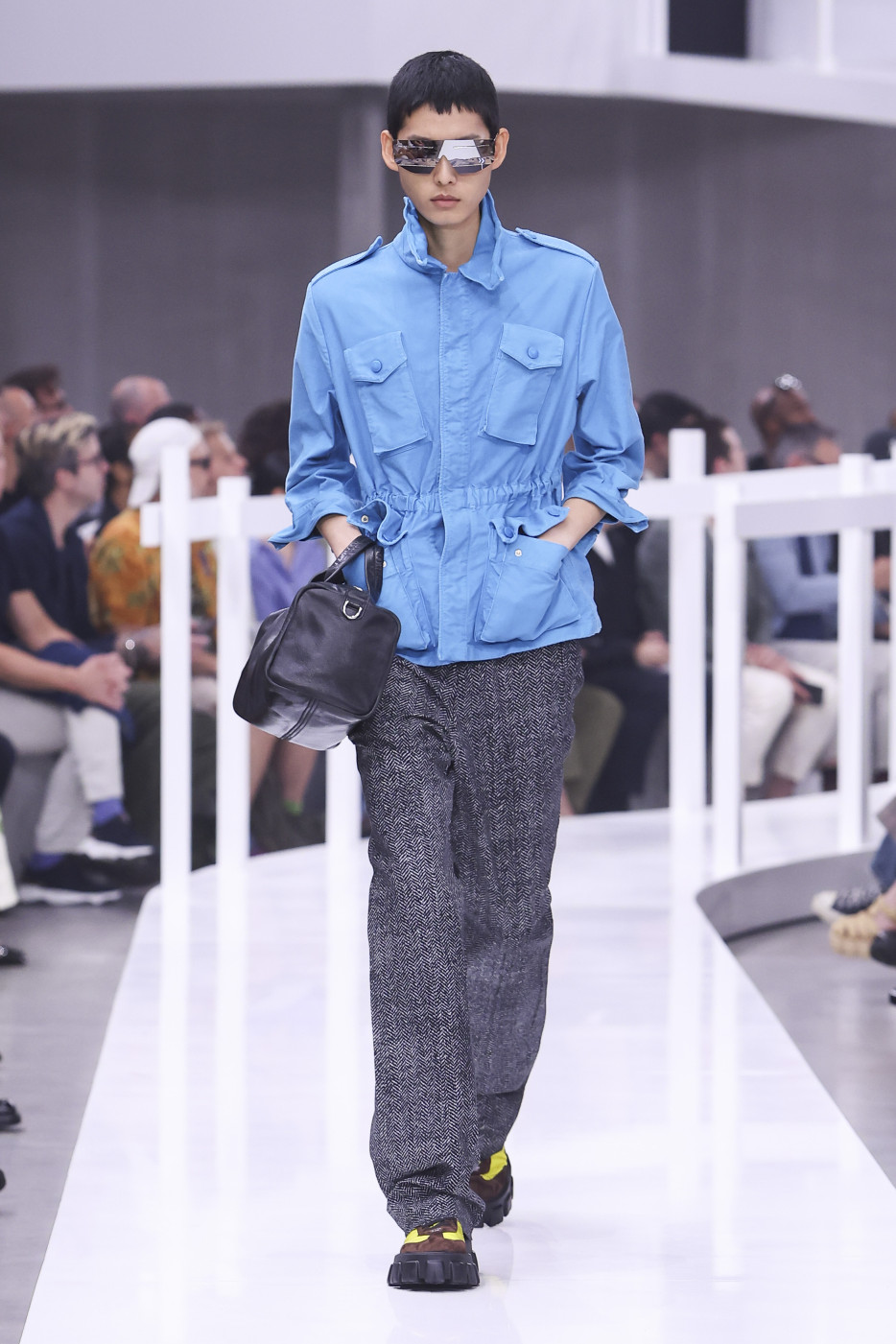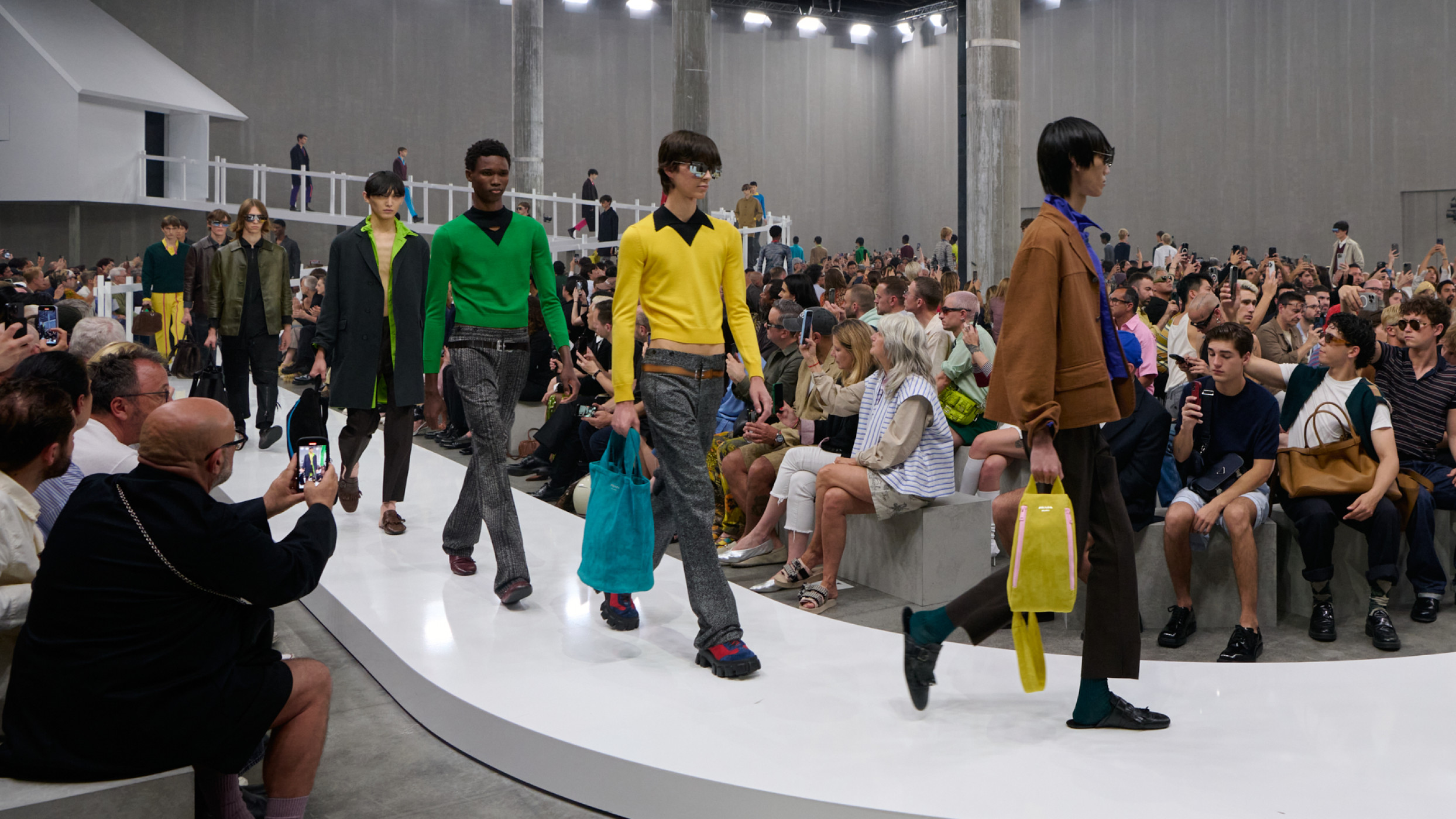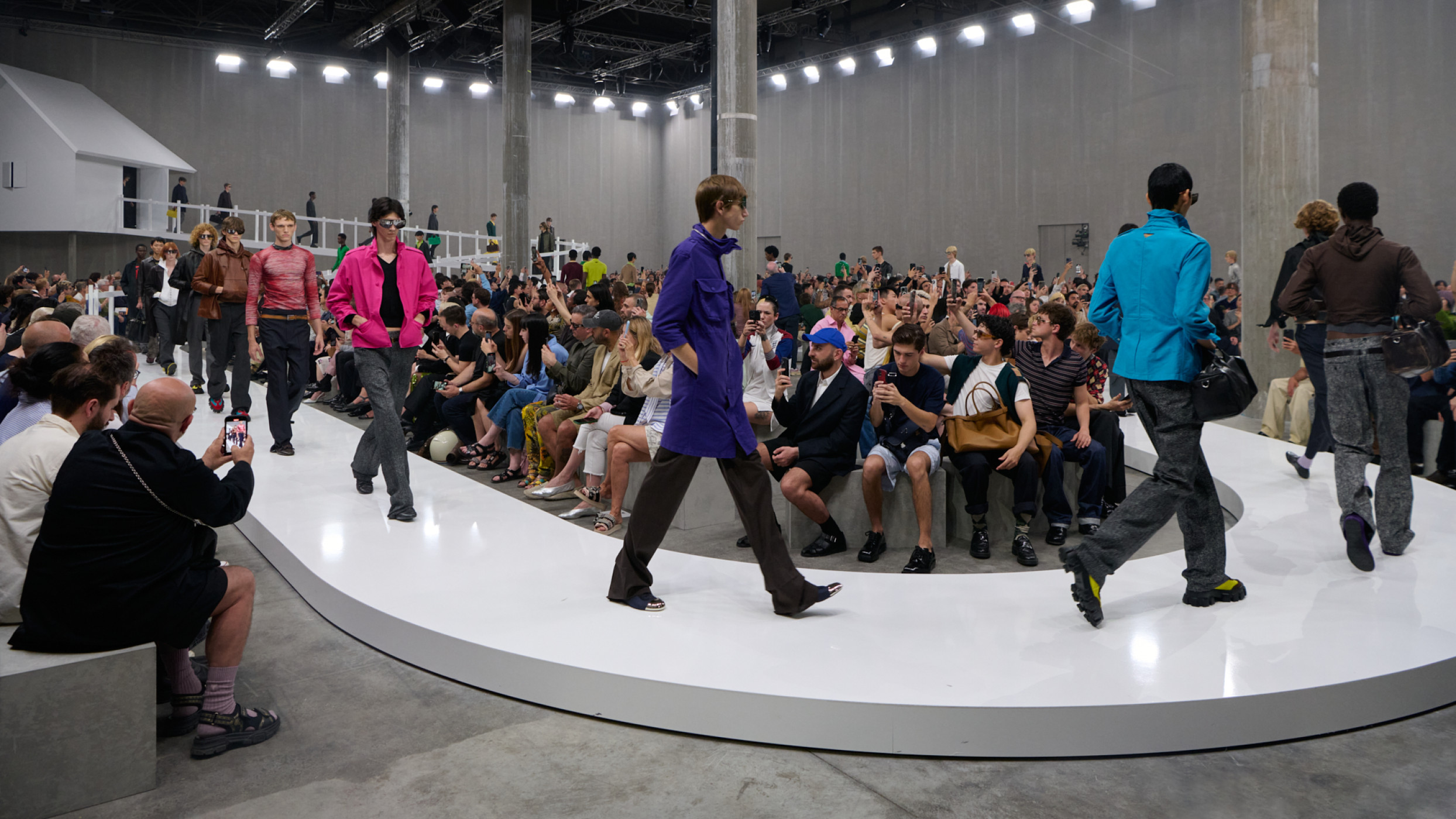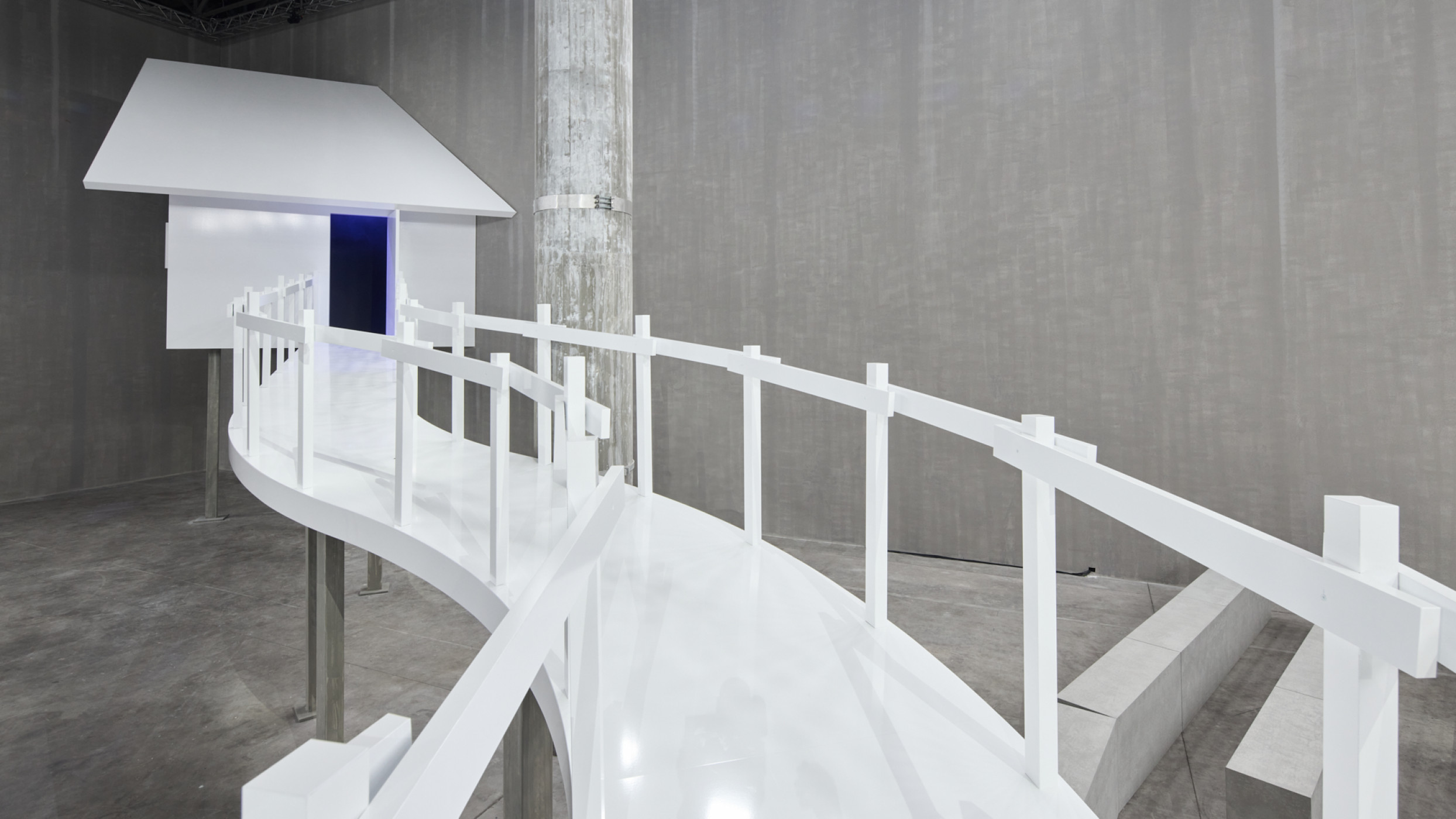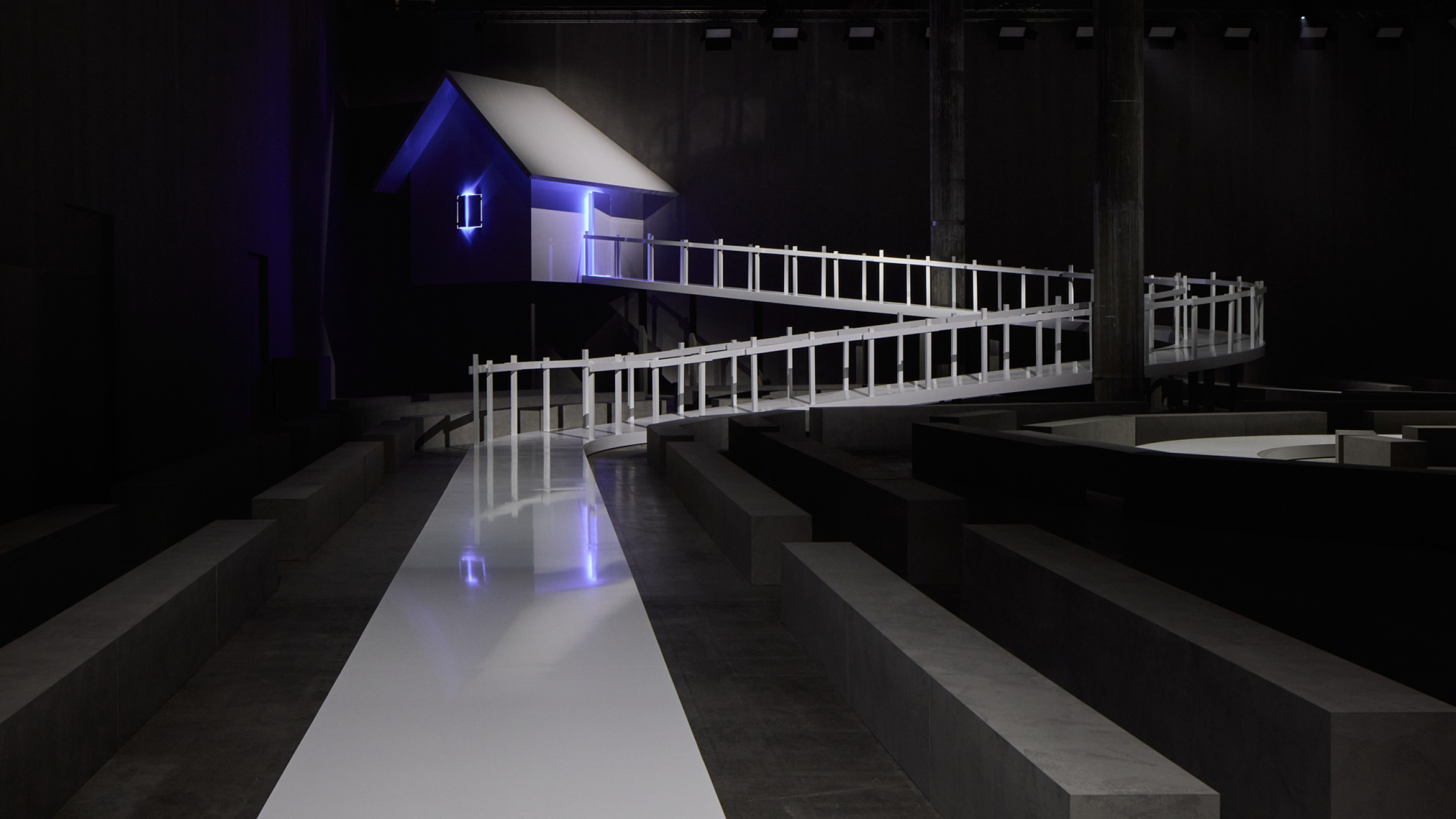
Get “Closer”: Prada’s Youthful Optimism for SS2025
“Sometimes when you get older,” said Raf Simons backstage after yesterday’s Prada show, “you start to overthink a lot, and you limit yourself. When you’re young, you just go.” Simons and Miuccia Prada, who are no longer young, went — and promptly overthought the SS25 collection.
The collection, they said, was meant as “a discourse around contemporary notions of truth and pretence”, and it encouraged viewers to reconsider what they were looking at. It was about youth, but it was also about youth reappropriating a previous generation’s worn clothes. It was, according to the press notes sent out by Prada, about the “power of reality, in a world of the imaginary”, which does not mean much.
Still, it all worked.
There were a lot of shrunken pieces — leather coats, woollen sweaters, utility jackets. Some clothes were pre-creased, patinated or aged, as if they were vintage (as if “stolen from father or mother”, according to the show notes). There was a certain resemblance to recent Miu Miu collections. You could see Troye Sivan wearing these clothes, showing off his belly button.
Jumpsuits in neutral colours came with zippers in bright hues, and models wore them with mirrored sunglasses. Trousers came with trompe l’oeil belts and intarsia crewneck knits had make-believe polo collars. The Prada logo was often reduced to a triangle-shaped void.
You had to get a closer look to really see (and get) many of the details. Hence the title of the collection, ‘Closer’.
OMA, the architecture practice led by Rem Koolhaas, built a “fairytale ravescape” inside the Deposito of Fondazione Prada. A white, meandering catwalk led to a suspended hut, also white, in a distant corner of the room. Loud techno bounced against the walls.
In the “don’t think and just go” category was a series of “concert” t-shirts with prints of Bernard Buffet paintings. The artist was Pierre Bergé’s lover from 1950 to 1958 when Bergé left him for Yves Saint Laurent. Buffet often boasted that he completed a painting a day for four decades, and was considered the ultimate in bad taste, depicting scenes of poverty in his huge château.
Maybe the Buffet prints were a nod to Prada’s reputation as the brand that transformed bad taste — most famously, seventies wallpaper graphics — into the highest of fashions.
Or maybe it was just the kind of random idea someone truly young might have had while scrolling through Pinterest.
Courtesy: Prada
Text: Editorial team


